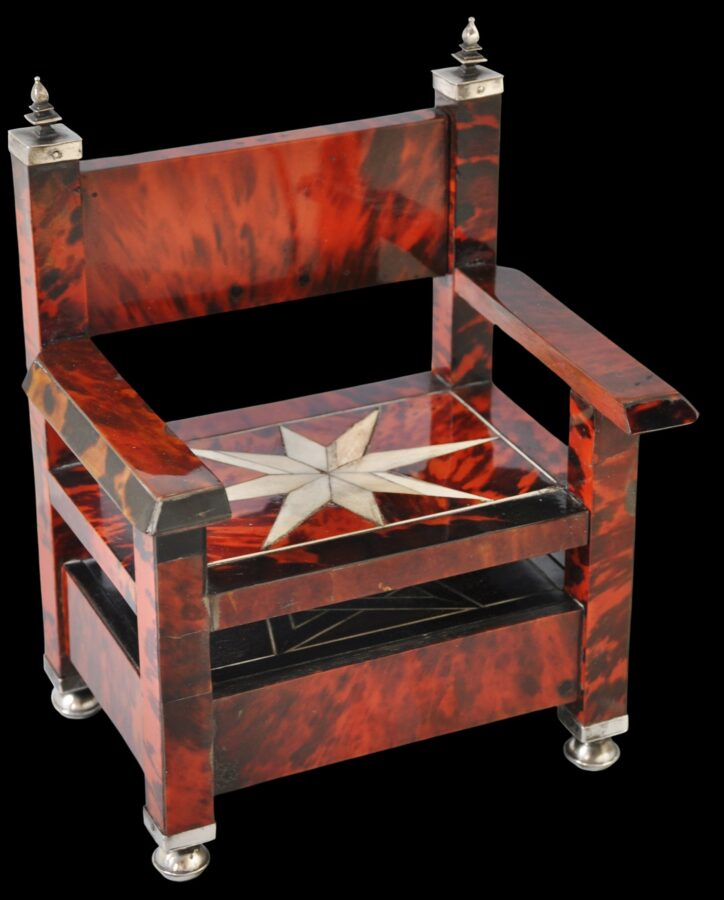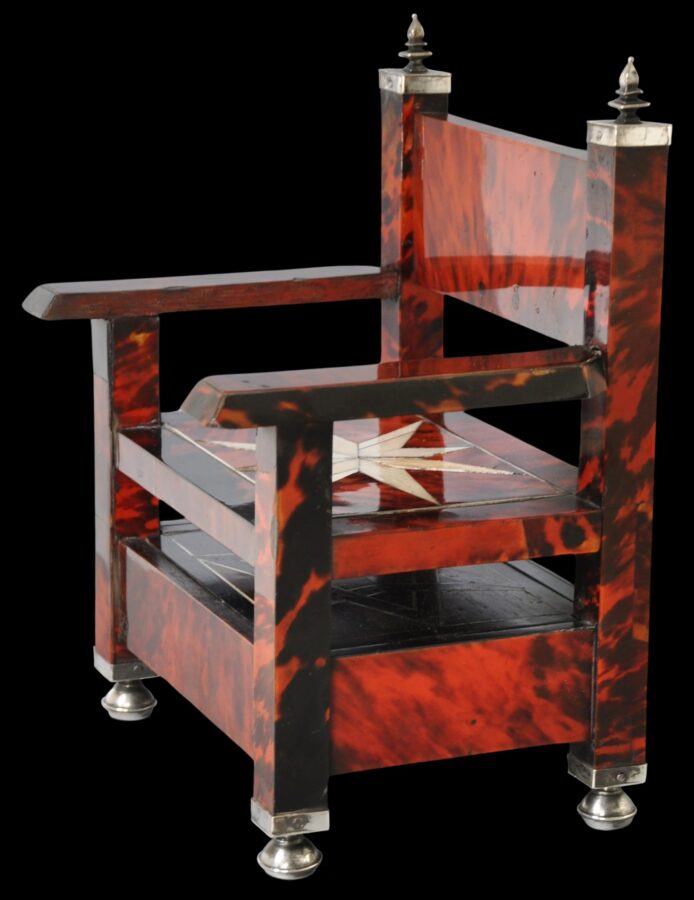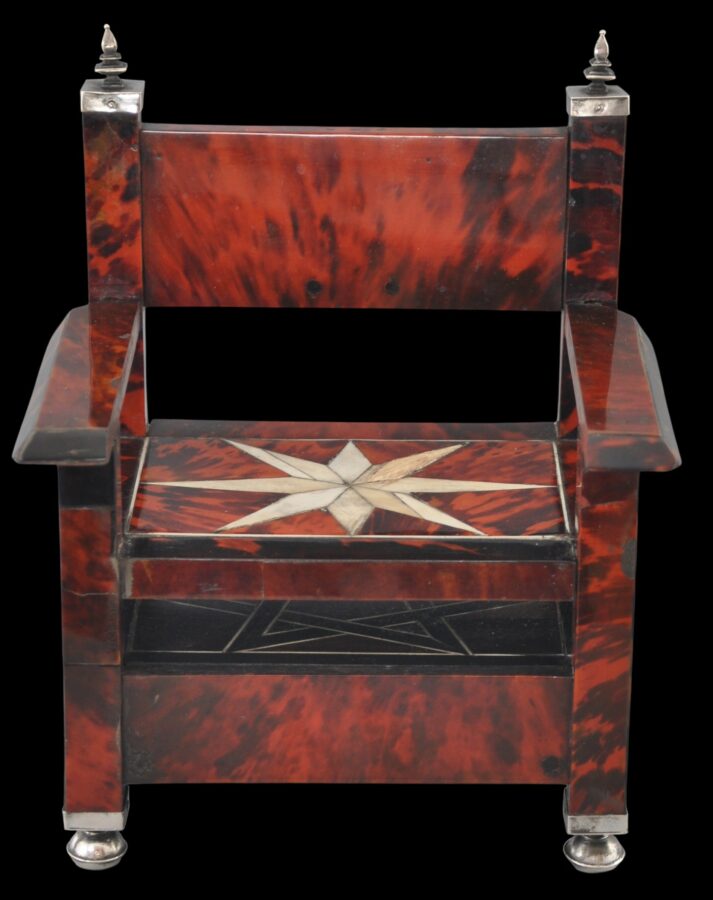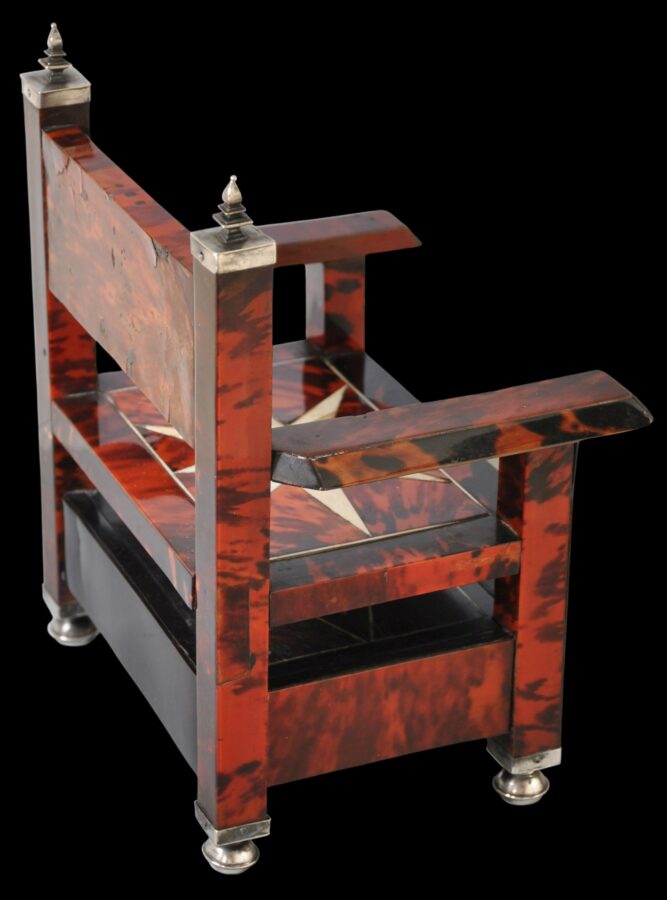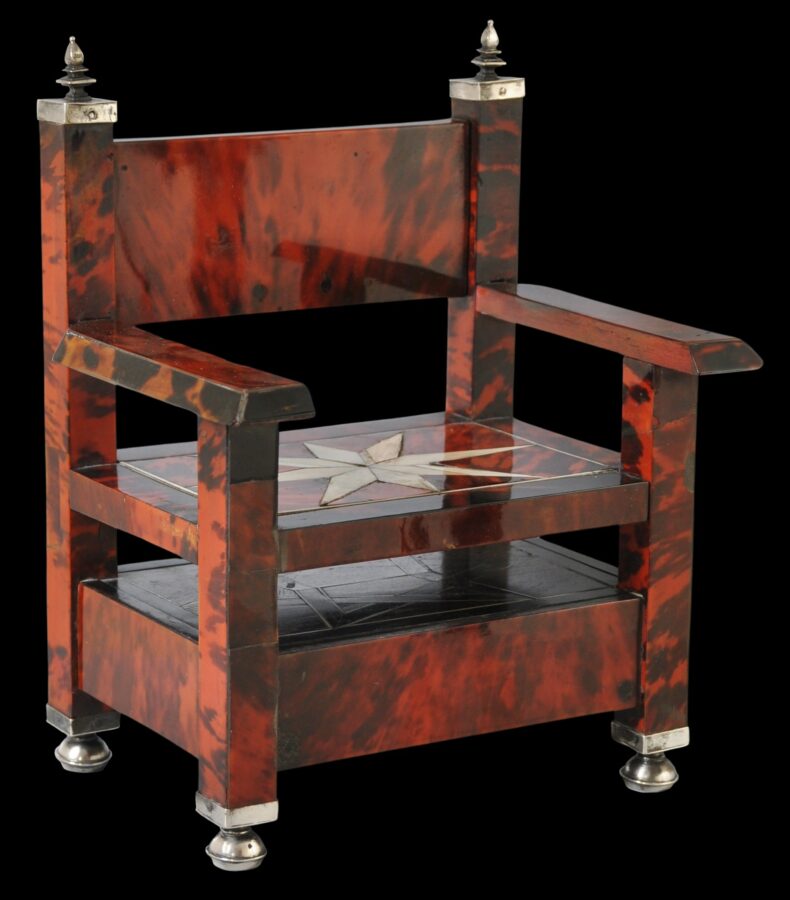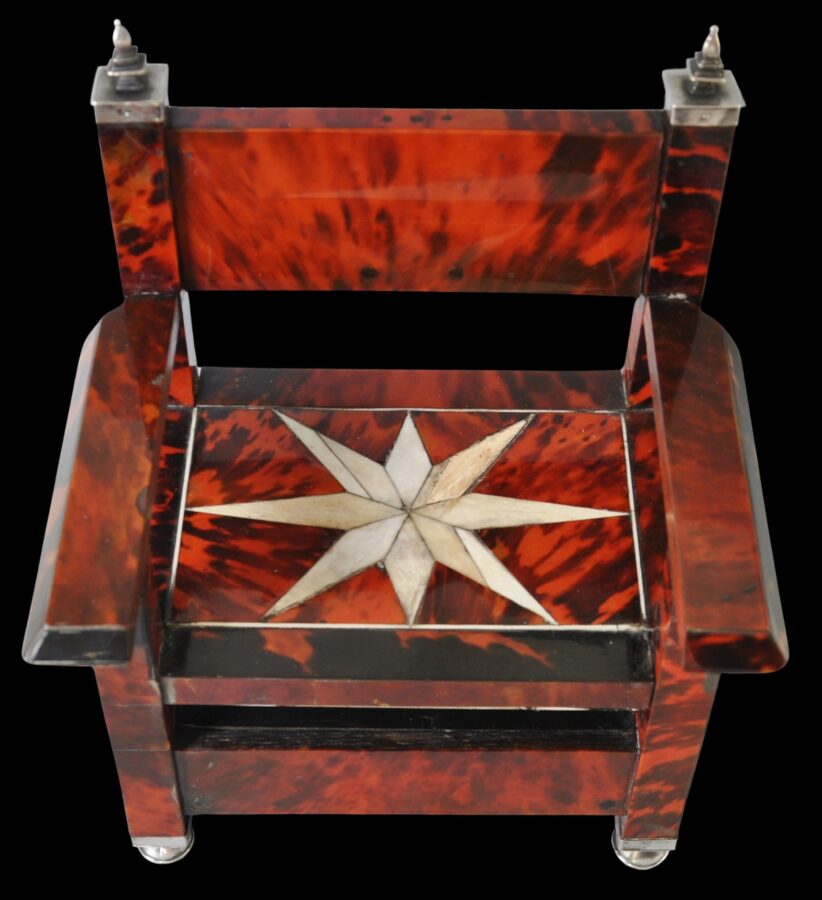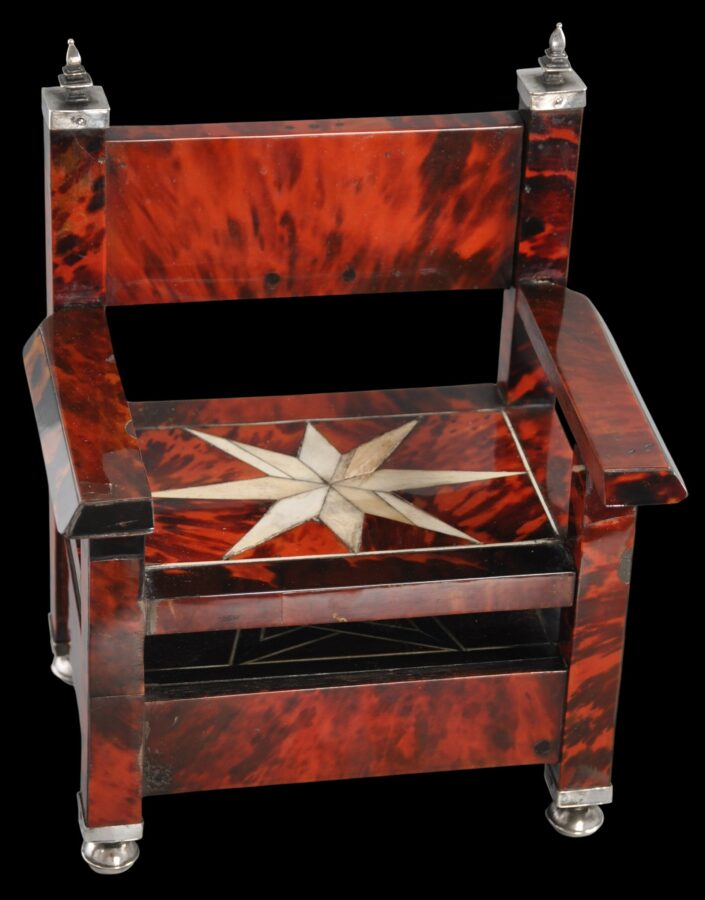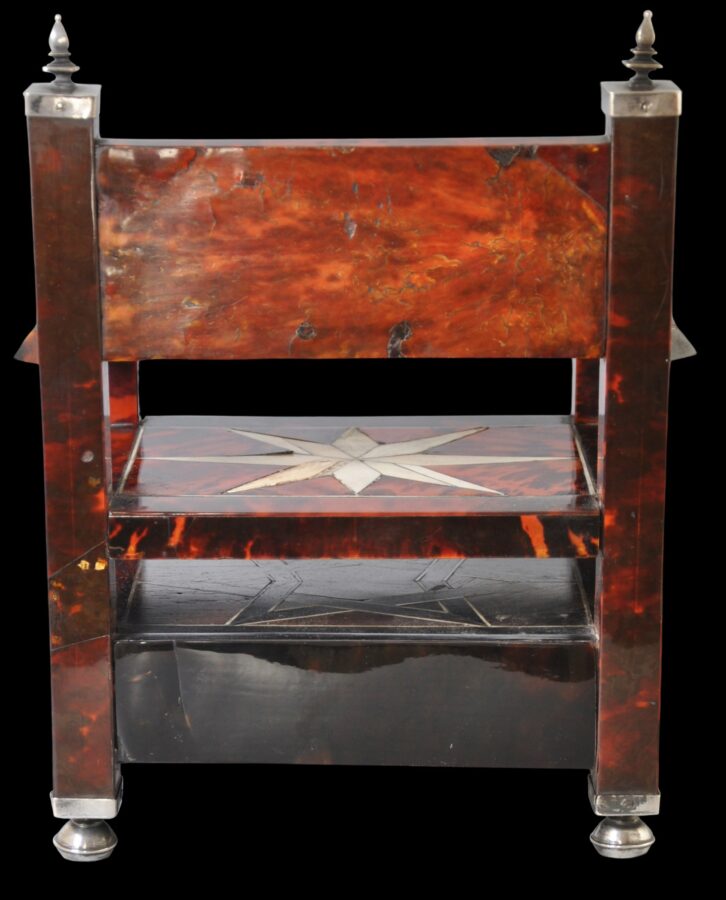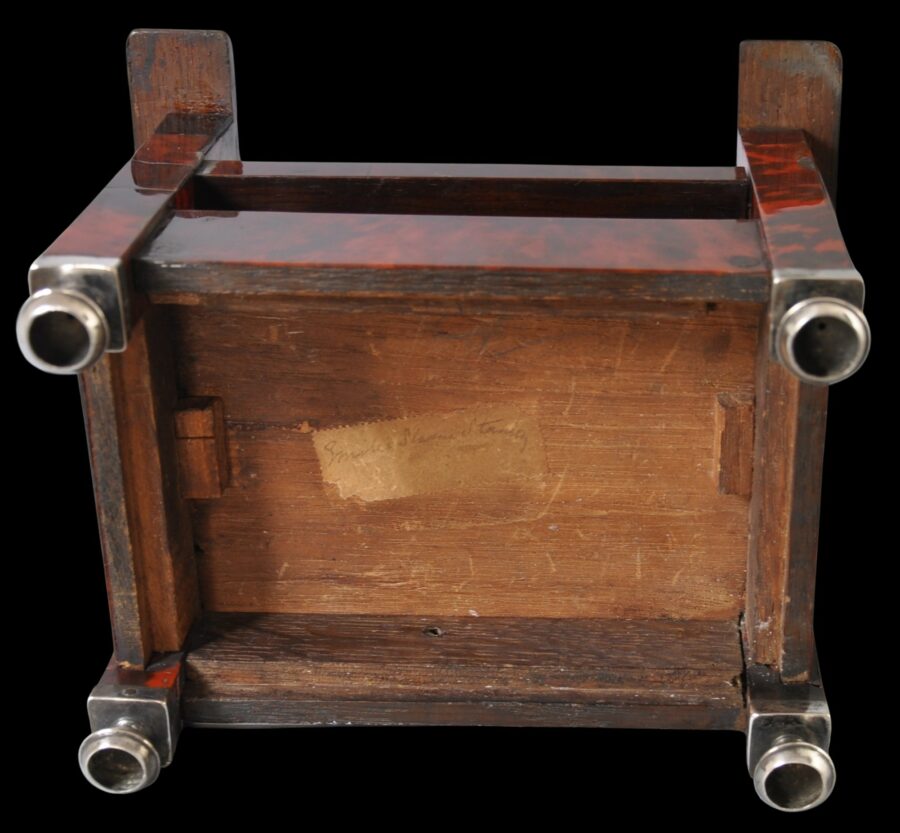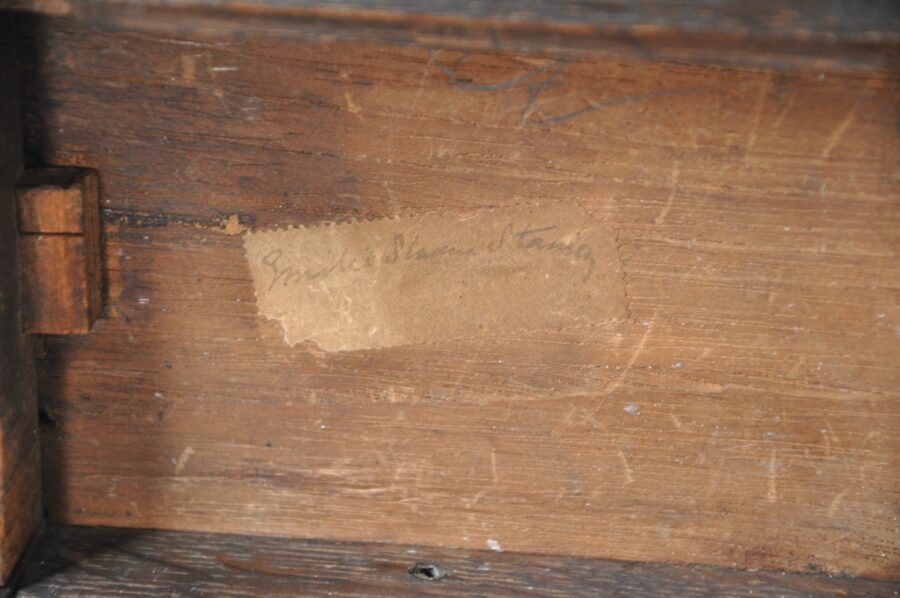Enquiry about object: 9535
Rare Spanish Colonial Miniature Chair with Silver Mounts & Inlaid with Tortoiseshell & Bone, for an Infant Jesus Image
Spanish Colonial Mexico 17th century
height: 25.4cm, width: 20.7cm, depth: 15.8cm, weight: 731g
Provenance
UK art market
This remarkably rare miniature chair was intended for use in a church or a monastery in Spanish Colonial Mexico in the 17th century. A miniature image of the infant Jesus, possibly in whole or in part made of carved ivory, would have sat on the chair, sometimes as part of a Nativity scene. It is of wood overlaid with tortoiseshell veneer with a rich red colouring beneath. There are two seats – an upper and a lower seat – both are in laid with bone veneer to form eight-pointed star motifs. The top rail finials are of silver, and the lower section of each of the the four legs is encased in silver and sits on a silver hemispherical foot.
The chair has been beautifully constructed. The proportions are elegant, the outer edges of the arm rests are bevelled, and the lines of the backrest are strong and crisp.
The eight-pointed star has several meanings in Christianity, particularly the elongated version. Sometimes known as the Star of Redemption or the Star of Bethlehem, it is associated with the birth of Jesus – by tradition, it was am unusually bright and moving star that guided the three wise men or magi to the Nativity. It also is seen to represent the Resurrection. That the chair is decorated wit an eight-pointed star does suggest that it was intended for a Nativity scene.
The chair is inlaid in geometric, Mudejar-influenced, designs with bone plaques, wood and tortoiseshell, using Moorish techniques and styles adopted in Mexico from the 16th century.
Clode Sousa (2009, p. 216) illustrates a similar chair in the Museum of Sacred Art (Museu de Arte Sacra) in Funchal on the Portuguese island of Madeira, which is attributed to 17th century Philippines. It is made of wood overlaid, in part, with tortoiseshell and inlaid with mother-of-pearl, and with silver mounts. Such small religious items were made in the Philippines for Peru and Mexico in the 17th century.
The miniature chair can be seen in the same context as the miniature beds and cradles that we made for images of the baby Jesus, sometimes encountered in Spanish Colonial South America and the Philippines.
The underside of the chair retains remnants of an old hand-written label, now illegible. Over the years some of the tortoiseshell veneer panels have been amended or replaced as might be expected. The interior sides of the arm rests do not have tortoiseshell veneer panels and so perhaps these have been lost. And there are (very) minor chips to the veneer elsewhere. Overall, the tortoiseshell has the most splendid, rich colour and patina.
Spanish colonial chairs of this type are rare and few of this level of luxury have been published.
References
Campos Carles de Pena, M., A Surviving Legacy in Spanish America: Seventeenth- and Eighteenth-Century Furniture from the Viceroyalty of Peru, Ediciones el Viso, 2013.
Clode Sousa, F., et al, Obras de Referencia dos Museus da Madeira, Instituto dos Museus e da Conservacao, 2009.
Rivas Perez, J.F. (ed.), Appropriation & Invention: Three Centuries of Art in Spanish America – Selections from the Denver Art Museum, Hirmer, 2022.


